|
|
|
4th Battalion, Royal Fusiliers
4th Battalion, Royal Fusiliers (City of London Regiment) were based in Parkhurst, Isle of Wight serving with 9th Brigade, 3rd Division. They proceeded to France with the BEF, landing at Le Havre on the 13th of August 1914. They saw action in The Battle of Mons and the rearguard action at Solesmes, The Battle of Le Cateau, The Battle of the Marne, The Battle of the Aisne, at La Bassee, Messines and the First Battle of Ypres. They took part in the Winter Operations of 1914-15, The First Attack on Bellewaarde and the Actions at Hooge. In 1916 they took part in The Actions of the Bluff and St Eloi Craters then moved to The Somme for The Battle of Albert, The Battle of Bazentin helping to capture Longueval, The Battle of Delville Wood and The Battle of the Ancre. In 1917 They were at Arras, seeing action at Battles of the Scarpe and The Battle of Arleux. They moved north to the Flanders and were in action during The Battle of the Menin Road and Battle of Polygon Wood during the Third Battle of Ypres. Then moved south and were in action at The Battle of Cambrai. In 1918 They were in action on The Somme, in the Battles of the Lys, the Battles of the Hindenburg Line and the Battle of the Selle. After the Armistice 3rd Division advanced into Germany as part of the Occupation Force.
5th August 1914 Mobilization
11th August 1914 Advance Party arrives
14th August 1914 Quartering Arrangements Completed
16th August 1914 Movement Orders
17th August 1914 On the Move
18th August 1914 On the Move
19th August 1914 Changes in quartering arrangements
20th August 1914 Changes in quartering arrangements
21st August 1914 Taking up stations in assigned areas.
22nd August 1914 Taking up stations in assigned areas.
23rd Aug 1914 German attack at Mons The Battle of Mons began early in the morning with a German artillery bombardment of the British lines, concentrated near a bend in the canal close to the town of Mons. At 9:00 am the German infantry assault began as they attempted to force their way across the four bridges that crossed the Mons-Conde canal. The demolition charges had been placed beneath the bridges by the Royal Engineers, whilst under fire from enemy snipers.
Four German battalions attacked the Nimy bridges, defended by a single company of the 4th Battalion, Royal Fusiliers and a machine gun section led by Lieutenant Maurice Dease at the south side of the railway bridge. The 4th Royal Fusiliers were positioned along the canal between the two bridges, the swing bridge having been turned to prevent crossing. The German infantry suffered heavy losses as they advanced in "parade ground" formation, the well-trained British riflemen were making hits at over 1,000 yards So heavy was the British rifle fire throughout the battle that the Germans thought they were facing machine guns.
To the right of the Royal Fusiliers, the 4th Battalion, Middlesex Regiment and the 1st Battalion, Gordon Highlanders were suffering heavy casualties in facing the German assault. With reinforcements from the Royal Irish Regiment (acting as the divisional reserve) and fire support from the divisional artillery, they managed to hold the bridges. The Germans then widened their attack, to the British defences along the straight section of the Mons-Conde canal to the west of Mons. Aided by the cover of a plantation of fir trees they inflicted heavy casualties with machine gun and rifle fire on the 1st Battalion Royal West Kent Regiment and the 2nd Battalion, King's Own Scottish Borderers, who despite their losses, managed to repulse the Germans throughout the morning.
The order to withdraw was given at 3pm, after a German soldier swam out to the swing bridge and activated the mechanism, allowing his comrades to cross easily. To the east the Germans had crossed the canal and were advancing on the British flank. The 3rd Division was ordered to retire to positions a short distance to the south of Mons which necessitated a similar retreat in early evening by the 5th Division, and by nightfall a new defensive line had been established at the villages of MontrÅ"ul, Boussu, Wasmes, Paturages, and Frameries. The Germans had spent the late afternoon building pontoon bridges over the canal, and were approaching in great numbers. News arrived that the French Fifth Army was also retreating, dangerously exposing the British right flank as night fell.
23rd August 1914 German attack crosses Canal
24th Aug 1914 The Battle of Mons At 2 a.m. on 24 August, II Corps was ordered to retreat into France to defensible a position along the Valenciennes to Maubeuge road, requiring a number of sharp rearguard actions against the pursuing Germans. 5th Brigade were ordered to to act as rearguard and fought a holding action at Paturages and Frameries, with Brigade artillery in particular, inflicting heavy casualties on the Germans.
At Wasmes, units of the 5th Division faced a heavy assault from German artillery which began bombarding the village at daybreak, followed at 10 a.m. by an infantry assault by German III Corps who advanced in columns and were "mown down like grass" by British Rifle and Machine Gun fire. Soldiers of the 1st West Kents, 2nd King's Own Yorkshire Light Infantry, 2nd Duke of Wellington's Regiment, and 1st Battalion Bedfordshire Regiment held off repeated German assaults on the village, despite taking heavy casualties, and then retreated in good order to St. Vaast at mid day.
24th August 1914 Withdrawals
25th August 1914 Ongoing Retirement
26th August 1914 In Action
26th August 1914 Retirement
26th August 1914 Ongoing Retirement
27th Aug 1914 Rear Guard
27th August 1914 Continued withdrawals
28th Aug 1914 Rear Guard
28th August 1914 Initial Intelligence Report
29th August 1914 Ongoing Retirement
30th August 1914 Demolitions on withdrawals
31st August 1914 Continued withdrawals
4th September 1914 Enemy across the Marne
5th Sep 1914 4th Royal Fusiliers depart for Malta Part of 4th Battalion, Royal Fusiliers set sail from Southampton on board HMT Galician bound for Malta. Previously they had been in camp at Wareham in training since 2nd August
6th September 1914 Attack Made
7th September 1914 Attack progressing
8th September 1914 Ongoing Battles
9th September 1914 Ongoing Action
10th September 1914 Davance
11th September 1914 Continued progress
12th September 1914 Bad Weather
13th September 1914 Strong Opposition
14th September 1914 Further Advance
15th September 1914 Shelling
16th September 1914 Difficulties
17th September 1914 Heavy Bombardment
18th September 1914 Night Attacks
19th September 1914 Attack Repulsed
20th September 1914 Ongoing Action
20th September 1914 Reliefs
21st September 1914 Attacks
22nd September 1914 Reliefs
23rd September 1914 Patrols
24th September 1914 Artillery Exchange
26th September 1914 Aircraft Assists
27th September 1914 Continuing action around bridges
28th September 1914 Bridges
29th September 1914 Ongoing fighting on all fronts
30th September 1914 September Intelligence Summary
1st October 1914 Commencement of Move
26th Oct 1914 In Action 
27th Oct 1914 In Action 
11th Nov 1914 Heavy Fighting
18th Feb 1915 Reorganisation
21st Feb 1915 Misty Day 
22nd Feb 1915 Thick Mist 
23rd Feb 1915 Infantry Make Attack 
24th Feb 1915 Artillery Support 
26th Feb 1915 Reliefs 
27th Feb 1915 Conference 
28th Feb 1915 Shelling 
21st March 1915 Reliefs
11th Jun 1915 Recce Made
12th Jun 1915 Recce
14th Jun 1915 Communication 
15th Jun 1915 Into Position 
15th Jun 1915 Preparations
16th Jun 1915 Attack Made 
16th Jun 1915 Preparations 
16th Jun 1915 Wounded Man Found
24th Jun 1915 Stranded after Attack
30th Jun 1915 5th Lincs into the Trenches
14th Jul 1915 Reliefs
26th Sep 1915 Reliefs 
16th Oct 1915 The Derby Scheme
28th November 1915 Relief Begins
29th November 1915 Reliefs 
1st Dec 1915 Derby Scheme Armlets
11th Sep 1915 Last day of Derby Scheme Recruitment
28th December 1915 Reliefs
3rd January 1916 "Q"1 & 2 trenches received some fizz bangs.
4th January 1916 Fizz Bangs 
10th Jan 1916 Group System Reopens
11th January 1916 Machine Gunners proceeded to trenches
17th January 1916 Reliefs
17th January 1916 4 H.E. shells fell on our Left Sector.
18th January 1916 Battalion proceeded to billets in Dicksbusch
25th January 1916 Relief of the 4th Royal Fusiliers
1st February 1916 Trenches Heavily shelled 
9th February 1916 Call Ups
9th of March 1916 Orders 
27th March 1916 Six mines were successfully exploded.
22nd of April 1916 Gas 
23rd of April 1916 Orders 
25th Apr 1916 7th Northumberlands Relieved by 4th Royal Fusiliers
24th of May 1916 Orders
27th of May 1916 Reliefs 
14th July 1916 Attack Made
14th July 1916 Attack Made
15th July 1916 Consolidation
16th July 1916 Trench Work
17th July 1916 New Emplacements
18th July 1916 Heavy Shelling
22nd of July 1916 Front Adjustment Completed 
10th Aug 1916 Reliefs
8th September 1916 Reliefs 
23rd October 1916 Orders
14th November 1916 Reliefs
15th Nov 1916 Reliefs
3rd January 1917 Inspections
11th January 1917 Posting
17th January 1917 Work done overnight, on Posts and wire strengthened.
1st May 1917 Orders Received 
24th September 1917 Reliefs.
27th September 1917 Orders
28th September 1917 Gas shells.
20th November 1917 One of our aeroplanes brought down.
12th Dec 1917 Orders 
12th Dec 1917 Orders 
12th Dec 1917 Orders 
11th January 1918 Inspections
17th January 1918 Route March.
25th of January 1918 Tea and Soup 
31st of January 1918 Training 
2nd March 1918 March
28th Mar 1918 Terrific Attack 
30th May 1918 Reliefs
1st Aug 1918 Some Shelling 
1st Aug 1918 Dispositions 
2nd Aug 1918 Hostile Artillery Active 
3rd Aug 1918 Quiet
4th Aug 1918 Orders Received
5th Aug 1918 Patrols 
6th Aug 1918 Some Shelling
7th Aug 1918 HQ Moves
18th September 1918 Heavy Shelling 
27th October 1918 Battalion moved from the Ecaillon and took over line of resistance East of Ruesnes
17th January 1919 Adjutants Parade at 1100 hours.
If you can provide any additional information, please add it here.
|
| Want to know more about 4th Battalion, Royal Fusiliers? There are:5371 items tagged 4th Battalion, Royal Fusiliers available in our Library There are:5371 items tagged 4th Battalion, Royal Fusiliers available in our Library 
These include information on officers, regimental histories, letters, diary entries, personal accounts and information about actions during the Great War.
|
|
Those known to have served with4th Battalion, Royal Fusiliers during the Great War 1914-1918. - Anderson Andrew. Pte. (d.27th March 1916)
- Ansted Alfred T.. Pte. (d.15th Nov 1916)
- Barnett William. Pte. (d.27th March 1916)
- Bathe Stanley Albert. Pte. (d.25th Sep 1918)
- Bench John. Sgt (d.6th December 1916)
- Bester Arthur Bannard. Pte. (d.16th June 1915)
- Blanks Alfred Walter. Pte. (d.16th Jun 1915)
- Brew George. Pte.
- Brown George. Pte.
- Butterworth Thomas. 2nd Lt.
- Button Frank. L/Sgt. (d.23rd Aug 1914)
- Chapman MM. John Richard. Sgt.
- Clark Ernest Arthur. Pte. (d.9th April 1917)
- Dease VC. Maurice James. Lt. (d.23rd Aug 1914)
- Dease VC. Maurice James. Lt. (d.23rd Aug 1914)
- Duck George. Pte (d.28th Mar 1918)
- Duck Walter Knaggs. Pte. (d.4th November 1918)
- Fountain Thomas. Pte. (d.2nd June 1915)
- Green Leslie.
- Green Leslie. Pte.
- Hill Daniel. Pte (d.16th June 1915)
- Hill Thomas. Pte. (d.7 January 1915)
- Hill Thomas. Pte. (d.7th Jan 1915)
- Jones Arthur. Pte. (d.16th Jun 1915)
- Joy Patrick. L/Cpl. (d.23rd Aug 1914)
- King MM. Harry. Sgt.
- Lanning C. F.. Pte. (d.18th January 1916)
- Lawrence David. Pte.
- Martin MM. Bertram C.. 2nd Lt. (d.13th April 1917)
- Moles Charles. L/Cpl. (d.29th Oct 1914)
- Mortlock Herbert Arthur. L/Cpl. (d.11th Sep 1916)
- Napper Richard William Henry Bennett. Sgt.
- Ringrose Richard Walter. Cpl.
- Roberts William W.. Pte. (d.29th May 1916)
- Rogers Sheffield Digby Kissane. Lt. (d.14th June 1915)
- Rudden Steven. Pte. (d.3rd May 1917)
- Sanders Reginald Thomas. Pte.
- Sinfield Thomas Henry. Pte. (d.22nd Aug 1918)
- Smith MM Roland Harold. Pte. (d.10th May 1918)
- Smithers Albert Edward. Pte. (d.16th June 1915)
- Tearle Herbert John. L/Cpl.
- Warman Albert Edward. Pte. (d.16th June 1915)
- Weare Frederick John. 2nd Lt. (d.9th Oct 1918)
- Wilson MC. Arthur Hone. Lt. (d.18th Nov 1916)
- Wilson James. Pte. (d.11 Nov 1914)
- Woodman Thomas. Pte. (d.21st January 1915)
All names on this list have been submitted by relatives, friends, neighbours and others who wish to remember them, if you have any names to add or any recollections or photos of those listed,
please Add a Name to this List
Records of 4th Battalion, Royal Fusiliers from other sources.
|
|
The Wartime Memories Project is the original WW1 and WW2 commemoration website.

- 1st of September 2024 marks 25 years since the launch of the Wartime Memories Project. Thanks to everyone who has supported us over this time.
|
Want to find out more about your relative's service? Want to know what life was like during the Great War? Our
Library contains many many diary entries, personal letters and other documents, most transcribed into plain text.
|
Looking for help with Family History Research?
Please see Family History FAQ's
Please note: We are unable to provide individual research.
|
|
Can you help?
The free to access section of The Wartime Memories Project website is run by volunteers and funded by donations from our visitors.
If the information here has been helpful or you have enjoyed reaching the stories please conside making a donation, no matter how small, would be much appreciated, annually we need to raise enough funds to pay for our web hosting or this site will vanish from the web.
If you enjoy this site
please consider making a donation.
Announcements
- 19th Nov 2024
Please note we currently have a massive backlog of submitted material, our volunteers are working through this as quickly as possible and all names, stories and photos will be added to the site. If you have already submitted a story to the site and your UID reference number is higher than
264989 your submission is still in the queue, please do not resubmit.
Wanted: Digital copies of Group photographs, Scrapbooks, Autograph books, photo albums, newspaper clippings, letters, postcards and ephemera relating to the Great War. If you have any unwanted
photographs, documents or items from the First or Second World War, please do not destroy them. The Wartime Memories Project will give them a good home and ensure that they are used for educational purposes. Please get in touch for the postal address, do not sent them to our PO Box as packages are not accepted.
|
World War 1 One ww1 wwII greatwar great battalion regiment artillery
Did you know? We also have a section on World War Two. and a
Timecapsule to preserve stories from other conflicts for future generations.
|
|
|
Pte. Leslie Green 5th Btn Royal Fusiliers Leslie Green served with the 4th and 5th Royal Fusiliers and transferred to 786th Area Employment Company, Labour Corps on 25th of October 1917 then back to the Royal Fusiliers on 24th of August 1918. He was with the Kings Liverpool Regiment on discharge.
|
Pte. Thomas Hill 4th Btn. Royal Fusiliers (d.7th Jan 1915) Thomas Hill was a regular soldier who served 3 years with The Royal Fusiliers from 1903 to 1906.
He was then recalled at the beginning of World War 1.
and rejoined the 4th Battalion of the Royal Fusiliers.
He received wounds at the first Battle of Mons and returned home where he died from shrapnel wounds.
He left behind a widow Rose and 3 young sons; Thomas,George and John. He was 29 when he died.
|
Sgt. John Richard Chapman MM. 4th Btn. Royal Fusiliers John Chapman volunteered during August 1914 and was sent to France after initial training. He took a prominent part in many important engagements, including the Battles of Ypres, Loos, the Somme, and Cambrai. He also participated in severe fighting at Dickebusch and Beaulencourt. He was awarded the Military Medal for conspicuous bravery and devotion to duty in the field, and was discharged in September 1918 on grounds of ill health. He died of tuberculosis in 1927.
|
Pte. George Brew 4th Btn. Royal Fusiliers My Great grandfather Private George Brew served with the 4th Royal Fusiliers.
He was discharged medically unfit in November 1915 and was part of the Battle of Mons. He died in 1947 in London aged 62.
|
Lt. Sheffield Digby Kissane Rogers 4th Btn. Royal Fusiliers (d.14th June 1915) I have no history of my Great Uncle Sheffield Rogers, other than that he died whilst on reconnaissance before the Battle of Belwaarde. His name is inscribed on the Menin Gate.
|
Sgt. Richard William Henry Bennett Napper 4th Btn. Royal Fusiliers Bill Napper was in the Merchant Navy as a Trimmer but came home to tell his wife Lizzie that he had left the Navy "Thank Gawd for that" she said and he replied "I've joined the Army".
He joined on 19th of September 1914 and his first day in the theatre of war was 11th of November 1914. He was badly wounded in the Battle of Arras in 1917. He spent some time in hospital, went home conceived my mother and returned to his regiment.
|
Pte. Walter Knaggs Duck Yorkshire Regiment (d.4th November 1918) Walter Duck was from a large family, a farm labourer, who took his horses Pudding and Star to war with him. Sadly, neither Walter or his horses came home. The family have the horses' brasses that came back from France. He served in Yorkshire Regiment and 4th Royal Fusiliers (City of London Regiment). Walter is buried in Caudry British Cemetery, in France.
|
Pte. Albert Edward Warman 4th Btn. Royal Fusiliers (d.16th June 1915) Albert Warman born in Acton in 1891, second son and youngest child of Charles and Florence Warman. The 1911 census shows he was a fish hawker. He served with the 4th Battalion of the Royal Fusiliers (City of London Regiment) service no. G/8853 and was killed in action on the 16 June 1915. He has no known grave and is commemorated on the Menin Gate Memorial, Ypres, Belgium and the War Memorial, St Mary's Church, Acton, London.
His older brother Alfred George served with the Princess of Wales (Royal Berkshire Regiment) and was killed in action on 25th September 1915. Tragically his parents lost both sons to the War within 4 months of each other.
|
Pte. Thomas Hill 4th Btn. Royal Fusiliers (d.7 January 1915) Thomas Hill was my great grandfather who died of shrapnel wounds inflicted at the Battle of Mons.
|
Pte. David Lawrence 4th Btn. Royal Fusiliers David Lawrence, my grandfather, served along with his work boss and close friend Mr Nickerson. I understand that Mr Nickerson was wounded and that David saved his life whilst under fire.
|
Pte. Albert Edward Smithers 4th Btn. Royal Fusiliers (d.16th June 1915) Killed in action in the 2nd Battle of Ypres, Albert Smithers is listed on Menin Gate Memorial
|
Pte. Reginald Thomas Sanders 8th Btn. Royal Fusiliers 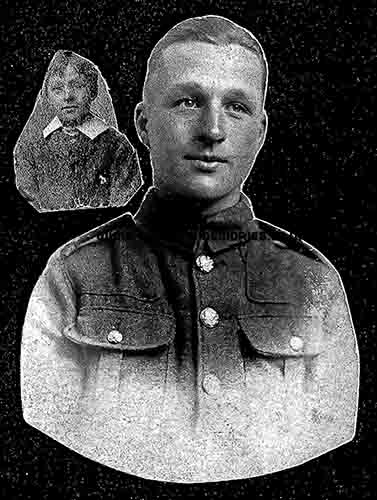 On 22nd of August 1914 my grandfather, Reginald Sanders, aged 19, volunteered for service in the armed forces.â€
He was recruited in Stoke on Trent and then travelled to Hounslow where he joined the 8th (Service) Battalion, Royal Fusiliers which was part of Kitchener's First New Army.
For the next nine months he was in training at various camps in England and on the morning of 31st May 1915 he left Aldershot and at 10.30pm the same day he landed in Boulogne, France. On 12th June he went into the trenches for the first time near Armentieres.
For the next 22 months, except for a home furlough in October 1916, he was in the trenches in the Aisne, Nord and Pas-de-Calais Departments of France.
On 29th April 1917 at Feuchy he suffered a wound to his right hip whilst returning from a working party and on 4th May 1917 he was transferred to Edmonton Hospital in England. I don't know how long he was in hospital but he was granted a furlough from the 12th to 21st June 1917. He was then sent to Shoreham in July 1917 and on 8th September 1917 he left for France and joined the 4th Battalion, Royal Fusiliers near Arras.
Excepting for a spell at 3rd Army Infantry School in Auxi-le-Chateau he was in the trenches until, on 27th March 1918, he was again wounded in action, this time a gunshot wound to the head. On 6th April 1918 he was transferred to Epsom Hospital. I don't know how long he was in hospital for but he was granted a furlough to visit his family in Newcastle under Lyme from 17th to 26th July.
On 29th July 1918 he was posted to the 5th Battalion, Royal Fusiliers at Dover where he stayed until 22nd September when he took a trade test at Woolwich Arsenal and he subsequently transferred to the Royal Engineers. He spent the rest of the war mainly in Hampshire and was demobbed on 31st March 1919 in Halifax.
|
Pte. Arthur Bannard Bester 4th Btn. Royal Fusiliers (d.16th June 1915) Arthur Bester found himself on the front line near Ypres in Belgium with the 4th Battalion Royal Fusiliers.
The Regiment's war diary speaks of the appalling conditions the soldiers face, but Arthur never mentions these in his letters home. Presumably he doesn't want his wife to fret. With three children to care for she has enough to worry about.
He's probably been there for about four months when, on a summer's day in 1915, he and his colleagues find themselves doing unexpectedly well during a push.
It appears he and his comrades are so eager to move forward when attacking, and so successful in doing it, that they advance quicker than predicted. They reach the second and third line German trenches ...and, tragically, are hit by friendly fire artillery that lands where British soldiers are not expected to be.
Arthur died of his injuries on 16th of June 1915, he is only 30 years old.
It clearly happened during an intense period of fighting. The following day, the Regiment's war diary tells of 50 men dead, 205 wounded and 114 missing.
Perhaps in the confusion and immediacy of war - perhaps, to be honest, because the extent of injuries made identification difficult - Arthur is buried in the German section of Menin Communal Cemetery, close to the Belgian French border.
It is on 28th of June 1915 that a letter reveals Arthur has been killed in action at Ypres. Pay due to him is sent in October - one pound, 15 shillings and three pence with stipulation that one-third must be spent for the benefit of the children, according to authorities.
Arthur's death isn't the only wartime tragedy his own parents must endure. His sole brother, William, is killed a couple of weeks before Christmas 1917 and is buried in France.
In 1928 Bella, Arthur's wife, receives a letter from the War Graves Commission to tell her that Arthur's body has been exhumed and moved to Harlebeke New British Cemetery. His name is on a plaque in the church, among about 20 other men who were reburied.
Today the Commission says Menen (it used to be Menin) was in German hands for much of the First World War until being taken in the autumn of 1918. Over the years there will be chatter within the family that the military dogtag sent to his widow couldn't be Arthur's because his had little Elizabeth's (his daughter) teethmarks on it. But who knows the truth?
Taken from East Anglican Daily Times - Saturday, June 18th 2016
Our great grandfather Arthur Bannard Bester, born 1885 in Northamptonshire, England.
|
Leslie Green 4th Btn. Royal Fusiliers Ive just received some of my grandfather Leslie Green's bits and bobs and his paybook is included.
|
Pte. C. F. Lanning 4th Btn. London Regiment (Royal Fusiliers) (d.18th January 1916) Private Lanning was buried in the Polemidia Military Cemetery in Cyprus, Grave 65.
|
Lt. Maurice James Dease VC. 4th Btn. Royal Fusiliers (d.23rd Aug 1914) Lt. James Dease was awarded the first Victoria Cross of the Great War 1914-1918 for exceptional heroism at Battle of Mons.
He was killed on the 23rd of August 1914 at the age of 25 years.
|
Lt. Arthur Hone Wilson MC. 4th Bn. attd. 7th Bn. Royal Fusiliers (d.18th Nov 1916) Arthur Wilson was born on the 9th June 1895 and died 18th November 1916 from wounds received in action. He was the son of William W. Wilson of Carrickmines House, his two brothers also fell.
|
Sgt. Harry King MM. 4th Btn Royal Fusiliers Harry King served with the 4th Btn. Royal Fusiliers.
|
Pte. Thomas Fountain 4th Btn. Royal Fusiliers (d.2nd June 1915) Thomas Fountain is my first cousin three times removed on my maternal father's side of the family. He was the son of George and Eliza Fountain of Bermondsey, London. He was 22 when he died and is one of the thousands without a known grave. Thomas is remembered on the Ypres (Menin Gate) Memorial.
|
2nd Lt. Bertram C. Martin MM. 4th Btn. Royal Fusiliers (d.13th April 1917) 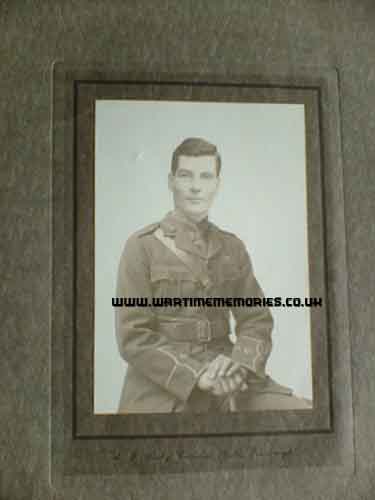 2nd Lieutenant Bertram Martin, 4th Royal Fusiliers was killed in action on 13th April 1917 between Wancourt and Guemappe, near Arras. He was awarded the Military Medal for conspicuous bravery in the field, and is commemorated on Arras Memorial.
He was born 25th July 1880 and joined the army on the 1st of January 1915. Cpl Martin's MM was gazetted on 11th of October 1916, which was probably for actions in the early days of the Battle of the Somme.
From the Peterborough Advertiser 28th of April 1917:
"Second-Lieut. Bertram Charles Martin, Royal Fusiliers, second son of Mr J T Martin, "West View", Woodston, is unofficially reported killed in action on April 13th. He joined the Army on January 1st, 1915, and went into training in Cornwall. He was drafted out to France and had been in the trenches practically ever since. Soon after going out he attained the rank of corporal. He had a marvelous escape in the battle of St. Eloi, when his haversack was shot through in several places and a tin box he was carrying was very much battered. In Delville Wood where he was for 16 days, he received a shrapnel wound above the knee and was in hospital for three months, returning to France about the middle of January this year. Subsequently he went into a training school to take up his commission, leaving on the 1st of April, and rejoining his own regiment on April 4th as Second-Lieutenant. Lieut. Martin was killed only nine days after obtaining his commission (April 13th). He wrote home on Easter Tuesday saying that he had been in a fight the previous day, when his men were in high spirits and behaved splendidly." 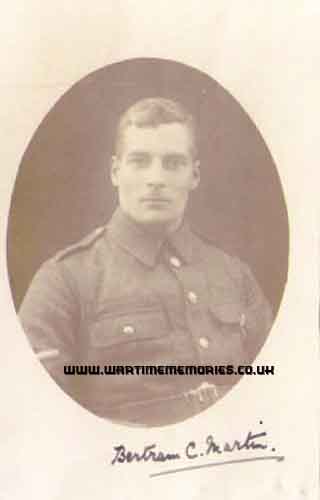 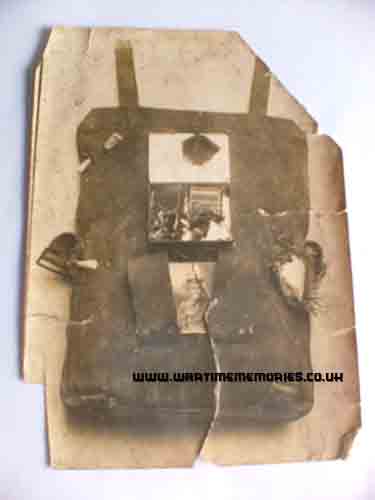 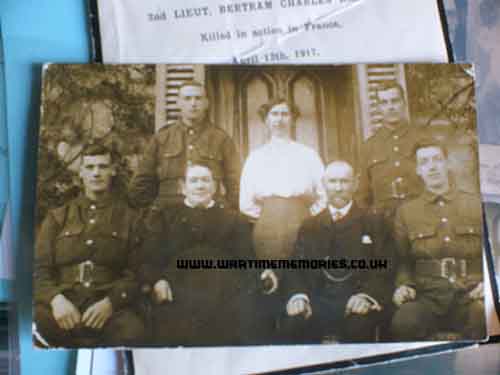
|
Recomended Reading.Available at discounted prices.
|
|
|


Site Home
Great War Home
Search
Add Stories & Photos
Library
Help & FAQs
Allied Army
Day by Day
RFC & RAF
Prisoners of War
War at Sea
Training for War
The Battles
Those Who Served
Hospitals
Civilian Service
Women at War
The War Effort
Central Powers Army
Central Powers Navy
Imperial Air Service
Library
World War Two
Add Stories & Photos
Time Capsule
Help & FAQs
Glossary
Volunteering
News
Events
Contact us
Great War Books
About
There are:5371 items tagged 4th Battalion, Royal Fusiliers available in our Library
